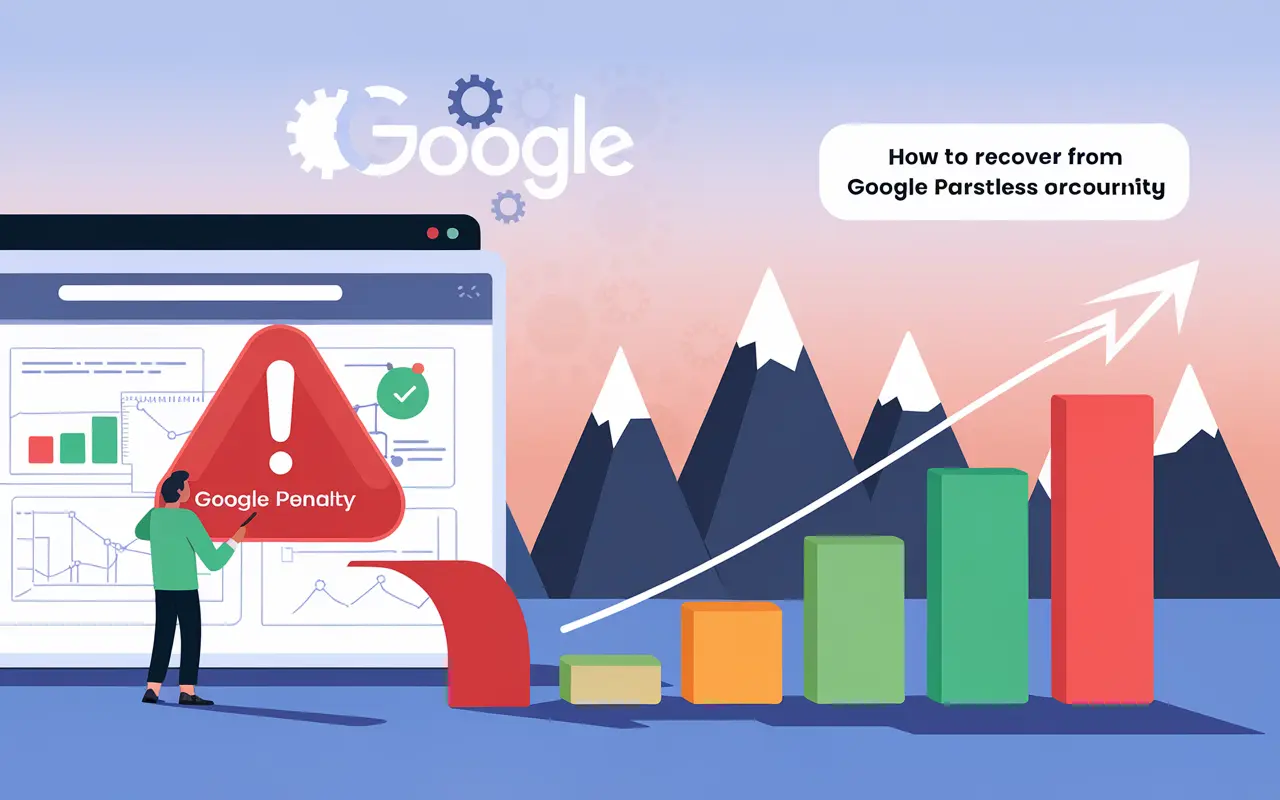Understanding Google Penalties and How to Recover
Google penalties are manual or algorithmic actions taken against websites that violate Google’s Webmaster Guidelines. These penalties lead to a significant drop in search rankings or complete de-indexing of affected pages. Recovering from these penalties is essential in any SEO strategy because it involves diagnosing issues, fixing them, and requesting Google to re-evaluate your site. Whether imposed by algorithm updates like Penguin or manually by Google’s spam team, recovering from a penalty ensures your site regains its rightful place in search engine result pages (SERPs).
Key Takeaway
Key Takeaway
Recovering from Google penalties is crucial for regaining lost visibility and traffic. A structured approach involving issue detection, correction, and communication with Google boosts SEO performance and restores brand credibility online.
Why Google Penalty Recovery Is Critical to SEO Success
Failing to recover from a Google penalty can decimate your website traffic and cripple your online visibility. Here’s why recovery is essential:
Protects Organic Search Investments
You invest time and money into SEO. Penalties undermine these efforts. Recovery ensures your investment yields long-term dividends.
Restores Visibility and Rankings
Google penalties can push your site off SERPs. Recovery brings your pages back into visibility, attracting organic traffic again.
Improves User Experience and Trust
Many violations involve thin or deceptive content. Resolving these boosts content quality, improving user satisfaction and brand trust.
Best Practices for Recovering from Google Penalties
Follow these actionable best practices to recover from Google penalties effectively:
- Identify the Type of Penalty: Is it manual or algorithmic (e.g., Penguin, Panda)? Use Google Search Console or ranking analysis tools to investigate.
- Audit Your Site Thoroughly: Use tools like Screaming Frog or Ahrefs to spot toxic backlinks, duplicate content, keyword stuffing, and other red flags.
- Disavow Toxic Links: For link-based penalties, remove bad backlinks and use the Google Disavow Tool to inform Google you no longer endorse them.
- Fix On-Page Violations: Address thin content, hidden text, keyword stuffing, or cloaking that trigger manual actions.
- Submit a Reconsideration Request: For manual penalties, write a transparent, detailed reconsideration request in Google Search Console.
- Monitor and Reassess: Even after recovery, continuously monitor your backlinks, content, and SEO practices to avoid future penalties.
How the Google Penalty Recovery Process Works
The recovery process involves a step-by-step methodology that’s both technical and strategic:
Step 1: Detection Phase
Use Google Search Console to check for manual actions. Cross-reference traffic drops with known algorithm update dates using tools like MozCast or SEMrush.
Step 2: Diagnosis Phase
Conduct a comprehensive audit of your website. Identify bad backlinks, thin or duplicate content, and schema violations.
Step 3: Correction Phase
Fix all red-flag issues. Clean up your backlink profile, revise content, and improve technical SEO elements like site speed and mobile-friendliness.
Step 4: Reconsideration & Recovery
Submit a reconsideration request if the penalty is manual. Google will review your site and either revoke the penalty or require further changes. Track rankings and traffic volume to measure success.
Case Study: From Penalty to Page One – A Real-World Recovery
Problem: Penalized for Unnatural Links
A mid-sized e-commerce site experienced a 75% drop in organic traffic after being flagged for unnatural link building. Their backlink profile included thousands of low-quality directories and paid articles.
Solution: Aggressive Link Cleanup and Reconsideration Request
Using Ahrefs, the SEO team disavowed over 3,000 toxic links and contacted 80 webmasters to remove links manually. They also overhauled onsite content and submitted a detailed reconsideration request.
Results: +180% Organic Traffic in 4 Months
Within 4 weeks, Google lifted the manual action. Over the next 4 months, the site’s traffic bounced back by 180%, keyword rankings rose, and average session duration increased by 40%.
Common Mistakes to Avoid During Penalty Recovery
- Submitting Reconsideration Requests Too Soon: If you haven’t fully fixed the issues, Google will reject your request.
- Only Disavowing Without Cleanup: Disavowing links is not enough; always try to remove them manually first.
- Ignoring On-Page Violations: Penalties aren’t just about backlinks. Fix deceptive content, keyword stuffing, and spammy markup.
- Failing to Keep Records: Always document your corrective actions. Google wants proof of effort and transparency.
- Delaying Action: The longer a penalty is in place, the more damage your SEO suffers. Act quickly.
Related Terms
Understanding these related concepts can significantly enhance your penalty recovery efforts:
- SEO Audit: Comprehensive site reviews that diagnose technical and content-related SEO issues.
- Black Hat SEO: Tactics like cloaking or link schemes that often trigger Google penalties.
- Google Algorithm Updates: Changes like Panda, Penguin, and Hummingbird that can result in algorithmic penalties.
FAQs About How to Recover from Google Penalties
A Google penalty is a negative impact on a site’s search rankings due to violations of Google’s Webmaster Guidelines. It may be manual or algorithmic.
You can identify penalties via alerts in Google Search Console or by noticing sudden, unexplained traffic and ranking drops.
Manual penalties can be lifted within 2–6 weeks post request, while algorithmic penalties depend on the next algorithm refresh.
Yes, but it requires deep SEO knowledge. Hiring a professional increases recovery success and speeds up the process.
Penalty Recovery Overview Table
| Step | Action | Tools |
|---|---|---|
| 1. Detect | Identify penalty type | Google Search Console, MozCast |
| 2. Assess | Audit content and backlinks | Ahrefs, Screaming Frog |
| 3. Fix | Clean up site and links | Google Disavow, outreach tools |
| 4. Re-submit | Request reconsideration | Search Console |
Conclusion: Bring Back Organic Rankings with Penalty Recovery
Google penalties can devastate your website’s visibility and profitability. However, by identifying issues, acting quickly, and aligning your optimization strategies with Google’s quality standards, you can restore and even enhance your rankings. Consistent SEO hygiene and adherence to Webmaster Guidelines are your best long-term defenses. Explore more in-depth SEO resources and strategies at DigiDream’s SEO services.






